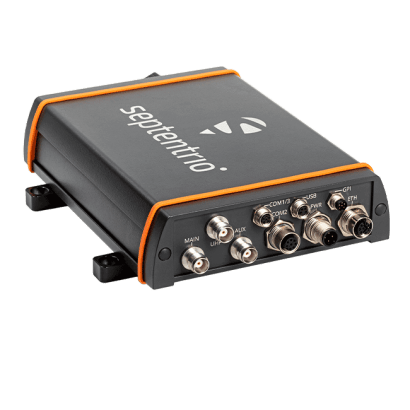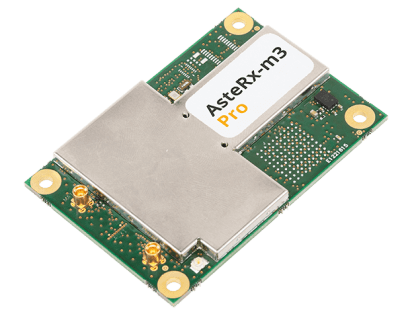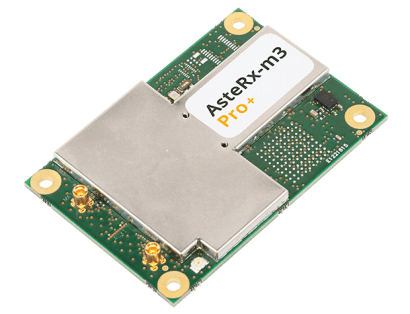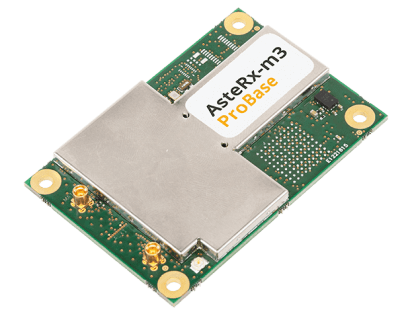High Precision GPS to Help Automated Bulk Volume Estimation ? Here’s why...
Efficient farms using the latest GNSS technology for automation
The Challenge
For the past 150 years, feedlot monitoring has been the responsibility of a select few employees, who visually gauge the amount of feed in concrete troughs, called bunks. However, this visual inspection by humans is inherently imprecise, subjective, and inconsistent, varying from person to person and from day to day, depending on their focus, alertness, and other factors. When faulty estimates cause animals to eat too much or too little one day, they will get off their optimal growth curve or even become ill and take days to recover.
Automation can greatly improve the accuracy and consistency of these volume estimates, as well as free up employees for other duties. However, until recently, no one had been able to build an effective and reliable feed automation system.
The Feedlots
Feedlots are carefully engineered. As the animals arrive, they are sorted by breed, mass, age, etc., and put into hundreds of pens. Their diets are prescribed, fed, and monitored for up to 300 days, depending on the beef’s market grade. Once each animal is deemed to be of the required quality, it is sent to an abattoir for processing, then to a customer.
The livestock have a feed allocation once per day, based on their intake behavior. To monitor it, a feedlot employee drives up and down a road, along hundreds of pens, looks out the window at the bunks, and visually estimates the amount of feed remaining. If the animals are leaving feed in the bunks, the amount distributed is trimmed back; conversely, if they are cleaning it up, the amount is increased.
These measurements need to be taken, normally, at least four times a day, to make sure that every pen of livestock is being fed and that none of them have run out. This is especially important overnight, when many sites are not staffed 24/7, because the peak times of consumption are dusk and dawn.
The Solution
Manabotix Pty. Ltd., a company founded in the fall of 2016 by its managing director Dr. Stuart McCarthy, a mechatronics engineer, has been helping the Australian agricultural sector by providing bespoke, novel technology to help solve site productivity problems. The company has focused mostly on cattle in feedlots, using lidar scanning and other vision or perception technologies, as well as satellite-based positioning and artificial intelligence.
With investment from Meat and Livestock Australia (MLA), who administers funds collected through a levy on livestock producers, in consultation with the Australian Lot Feeders’ Association (ALFA), Manabotix developed a unique solution to the problem of monitoring the amount of feed in the bunks: a self-contained device consisting of a lidar scanner, a Septentrio GNSS receiver and antenna, and an onboard processing platform. A small HMI feedback screen is also provided in the host vehicle, allowing the operator to see operating and diagnostics information.
The “bunk scanner” has gone through a rigorous evaluation, validation, and adoption experiment campaign over several feedlots across the Darling Downs and Western Downs, Queensland, which was completed in August 2018. Manabotix launched the bunk scanner in early October 2018 in Brisbane, at BeefEx, an international tradeshow for beef feedlots. The design is currently being refined for a second generation of the system, which will include a newer version of the lidar scanner and a new communications infrastructure.
The Role of the Lidar Scanner
Lidar measures distances very precisely, using laser pulses analogously to the way radar uses high-frequency radio waves and sonar uses sound waves. The returns from the laser pulses are used to generate 3D “point clouds” of terrain or objects that can then be visualized and analyzed. The lidar scanner used in this implementation, which has a range of 0.7-3 m and a resolution of 2 mm, takes a cross-section of the bunk to measure the volume of feed remaining. This volume is then easily converted to mass based on knowledge of the feed’s ration density. The unit is bolted to the back of a light vehicle, giving the scanner a clear line of sight to the bunk. Occasionally, an animal’s head obstructs this line of sight, but Manabotix developed an algorithm to remove animal interference from the lidar returns.
High quality GPS/GNSS receiver & AIM+ can deal with radio frequency interference from nearby infrastructure installations.
The vehicle's forward speed determines the point cloud spacing along the bunk. Currently, this speed is normally about 7-10 km/hr, and the lidar runs at 100 Hz, yielding a point spacing of about 50 mm. The next version will be able to operate at up to 15 km/hr. In the future, the vehicle could be fully autonomous, freeing the driver for other duties. Manabotix has tested the lidar scanner both by day and by night and reports that performances have been very consistent under all ambient conditions.
An onboard processing platform combines the lidar scanner’s measurements with the GNSS positioning solutions to resolve quantities of feed remaining. These are then communicated back to a central data service for subsequent reporting and action.
See the MLA automated feed bunk scanner in action
The Role of the GNSS Receiver
The Septentrio AsteRx-U GNSS receiver in the bunk scanner acts as a rover in an RTK set-up, paired with a base station at most a few kilometers away, achieving a horizontal positional accuracy of 5 mm across the site. This extreme accuracy is essential to optimize the accuracy and precision of the volumetric solution.
Feedlots consist mostly of pens and roads on a flat terrain. Nevertheless, they also contain structures — such as huge silos and steel posts to hold up very large shade cloths — that can cause multipath. Additionally, the area may be subject to radio frequency interference from nearby infrastructure installations. This was, in fact, the case at one of the feedlots during some recent experiments.
Septentrio’s multi-constellation and multi-frequency GNSS receiver with AIM+ helps to mitigate these issues. The ability of a GNSS receiver to handle multiple frequencies from multiple constellations to calculate its position is essential to minimize errors. The use of multiple frequencies is the most effective way to remove position calculation errors that are due to signal delays in the Earth’s ionosphere and provides more immunity to interference. The use of signals from multiple constellations greatly increases the number of satellites in the field of view. This reduces the signal acquisition time, improves the accuracy of the position and time solution, reduces the problems caused by obstructions in the view of the sky (such as buildings and foliage), and improves the spatial distribution of the visible satellites, reducing the PDOP. Therefore, the AsteRx-U GNSS receiver is able to compute the most accurate and reliable position. “Even on cold starts, it gets a position solution very quickly,” says Dr. McCarthy.
The Choice of Septentrio
Manabotix chose Septentrio for the positioning solution because it already had a long-term relationship with the company and trusted its ability to provide a solution that matched its specification requirements, explains Dr. McCarthy. “They’ve always had what we’ve needed in terms of a commercial model and a technical model. We are an integrator, in effect. If we don’t have confidence in the equipment that we are integrating and selling, we could be quite exposed. We have confidence in them from a technical level, which allows us to always deliver on time and within budget.”
“We also really liked working with Septentrio and with their Australian distributor, GlobalPos” Dr. McCarthy says. He praises “the accessibility of the tech support,” adding, “We do not have all these barriers with sales guys or business development guys. You are talking directly to the people who know what they are doing. Then, if you want something a little bit different, a little more bespoke for your solution, they are also on board to try to work with you to get it. They are very robust and reliable.”
While the source of the wideband interference experienced at one of the experiment feedlots is still undetermined, the AIM+ firmware on the Septentrio GNSS receiver enabled Manabotix to mitigate it and get back online. “We were able to also provide raw data dumps back to Septentrio’s headquarters in Belgium,” Dr. McCarthy recalls, “and they were able to decant that data and provide us more instructive feedback with our troubleshooting process. This is really useful and makes a big difference for us, because we want to provide the best technical solution and we don’t want to get bogged down trying to solve everyone’s problems.”
The Results
Manabotix has demonstrated with a high level of confidence that its solution is far more accurate and precise than human predictions, based on extensive experiments at several feedlots in different geographic areas, under different operating conditions, both day and night. It was determined that humans generally underestimate volumes, particularly very large ones. By contrast, Manabotix’s solution has an accuracy better than 10 kg (for all feed remaining masses assessed, from 0 kg to more than 500 kg) and a precision with an r2 (coefficient of determination) of about 0.99. Therefore, it is very repeatable and the error model can be easily described through statistical analysis.
At about A$400-A$500 per ton and rising with the drought conditions, feed costs are up to A$350,000 a day for Australia’s largest feedlots, and operators are always required to perform a fine balancing act between feeding their cattle too much and not enough. Therefore, even a 1% improvement in feed utilization would have a massive impact on their profits. Additionally, if the bunk scanner were mounted on an autonomous vehicle, that would free up employees to perform other valuable tasks. Finally, the greatly increased feed measurement accuracy improves the health of the animals, by ensuring that they are neither underfed nor overfed.
"This could be revolutionary, because it has always been done a certain way and this is a whole paradigm shift,” says Dr. McCarthy.
Related content
- Brochure: GPS / GNSS Spoofing - types, how to detect and mitigate
- Brochure: GPS / GNSS Interference - counteracting jamming





